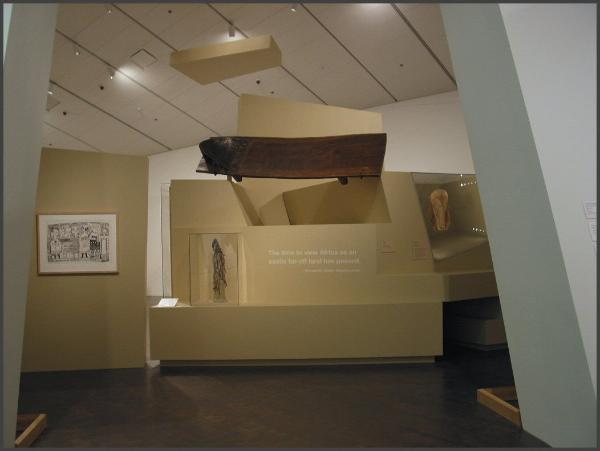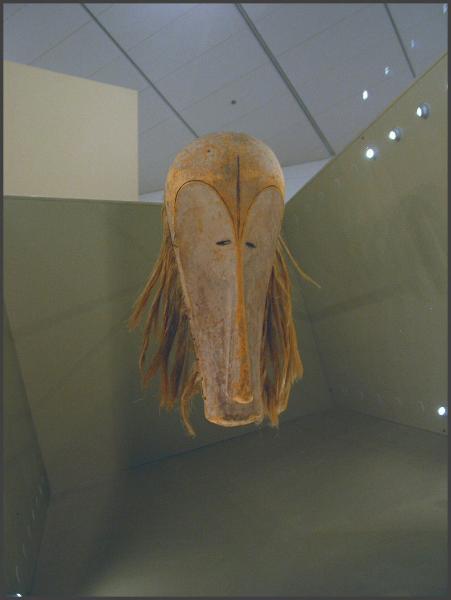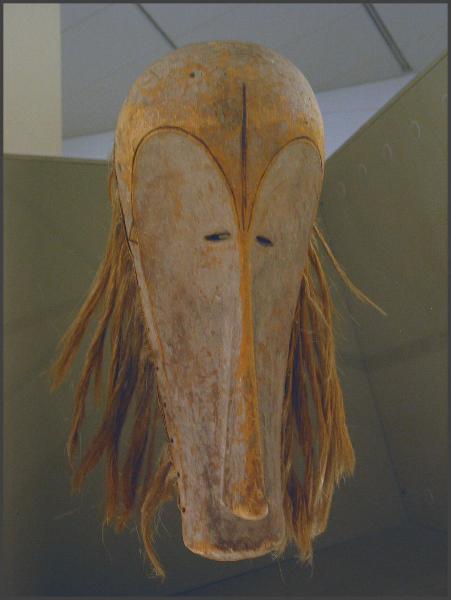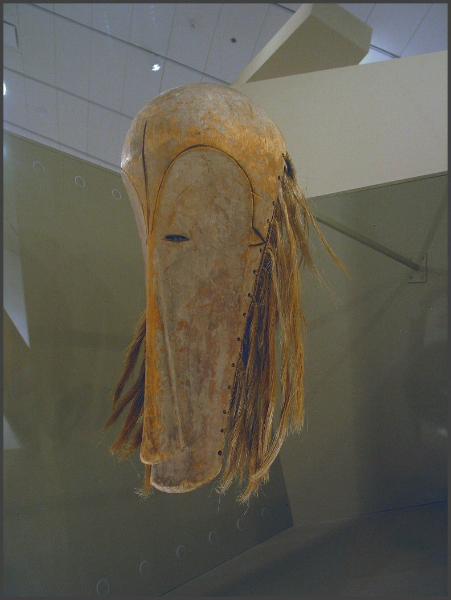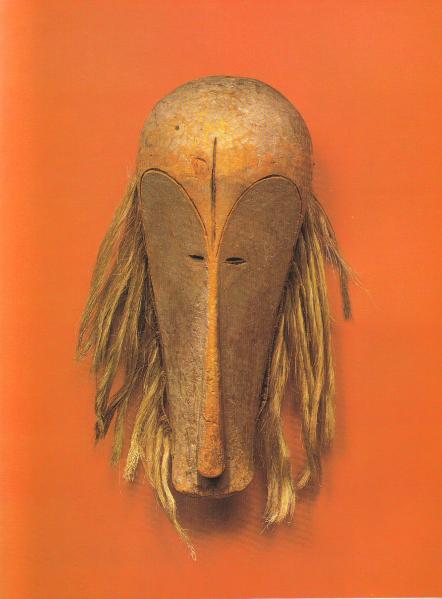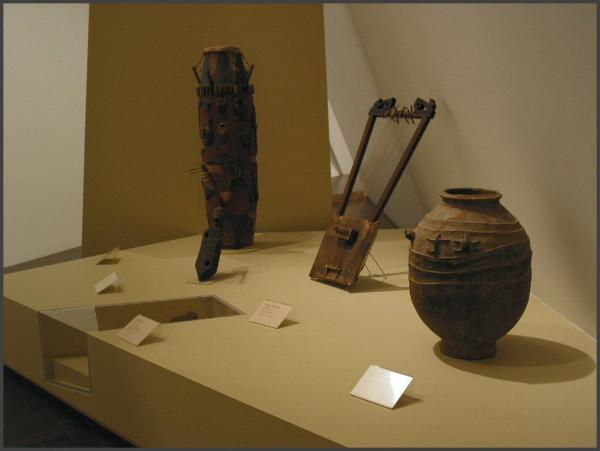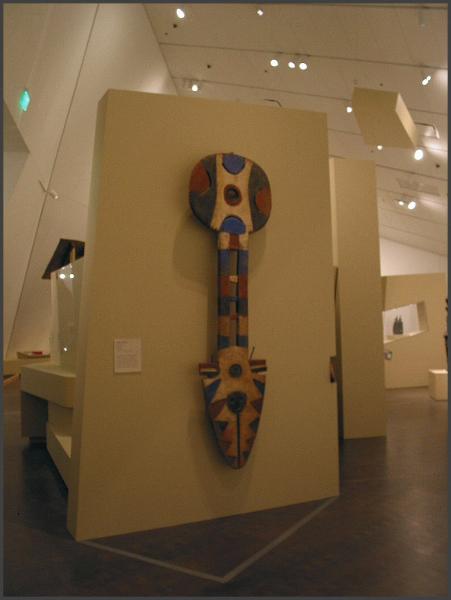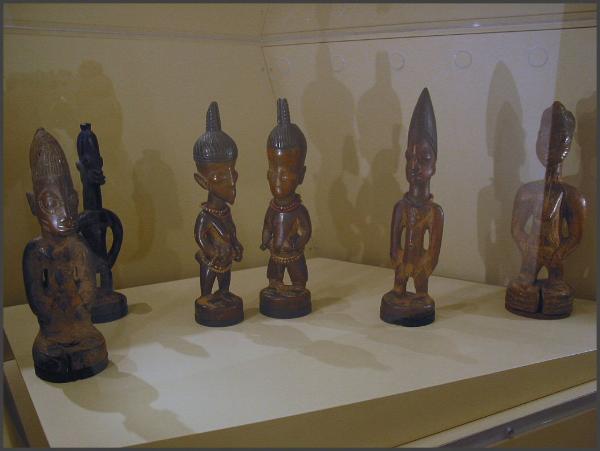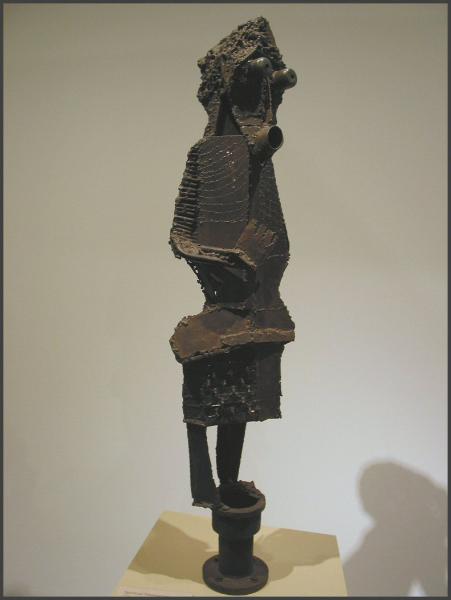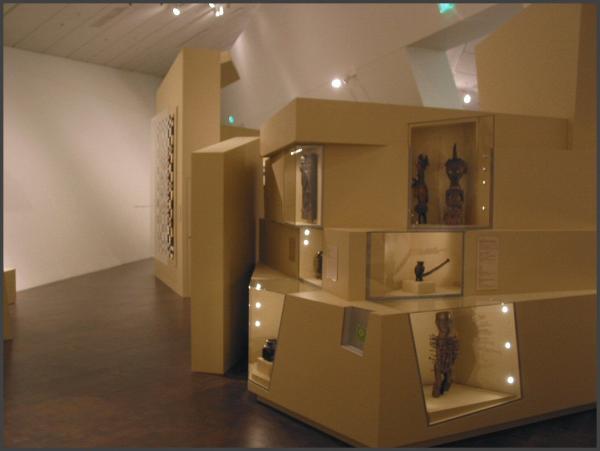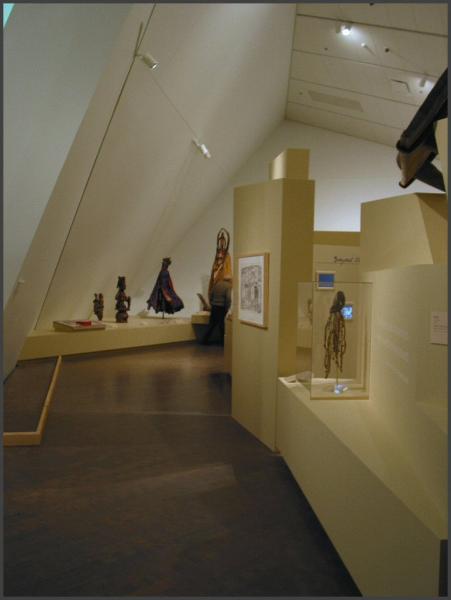| The new African art gallery and Oceanic art gallery in the Denver Art Museum expansion building (the Frederic C. Hamilton Building) opening October 7th, 2006 Unfortunately there are no programs or exhibitions that will be introduced when the building opens that will 'focus' on African art, but the exciting thing is that African and Oceanic art at the Denver Art Museum FINALLY have their own separate galleries and won’t have to share space with other cultures! The African Gallery displays both traditional AND contemporary African art in the gallery. I attended a special preview of the Denver Art Museum expansion on Monday September 25th and this page contains some photos I took in the new African and Oceanic galleries. The lighting wasn't the best for photography, so some of the photos may be a little out of focus or the color may be a bit off (I did a little Photoshop editing on them to make the color a little better. The new African art gallery is located on the 4th floor of the new expansion and the new Oceanic art gallery is located directly below it on the 3rd floor. When I had originally seen the renderings of the space I had envisioned the spaces to be a lot larger, but in reality they are relatively small spaces in comparison to the sizes of the other galleries in the museum. The displays in the galleries will change every 6 months and the predominant focus was on objects from Nigeria in the current installation. Even though the African and Oceanic galleries are smaller than I wished they were, it's still nice to finally have dedicated galleries in the museum for them! Only 2% of the museum's African art collection will be on display at any one time in the new gallery, hopefully in the next year or so they will use on of the new temporary exhibition spaces to do an African or Oceanic exhibition that will allow more of the collection to be displayed. The virtual tour is broken into 2 pages and there is a link at the bottom of this page to the next page. |
| CLICK HERE to go to PAGE 2 of the tour which completes the African art gallery and also shows images from the new Oceanic gallery. Rand African Art home page |

| Above is the entrance to the "Daniel Yohannes African Gallery" which displays contemporary works next to older pieces to demonstrate the evolution of art in those cultures, below is the statement that is displayed in the entry way. |

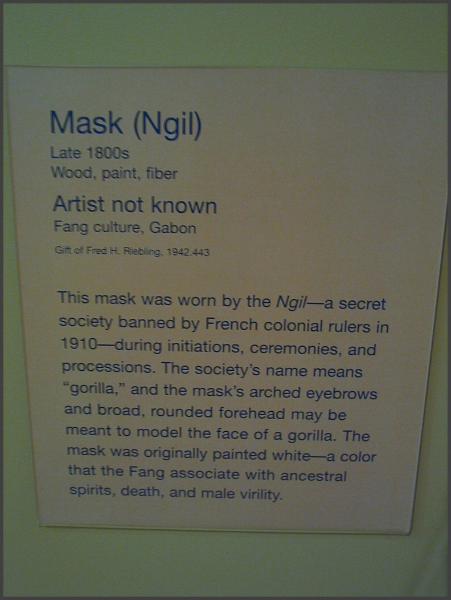
| Fang Ngil society mask, Gabon wood, raffia, white pigment 55cm gift from Fred Riebling of Denver in August 1942, collected in the 1890s by Dr. Albert L. Bennett Right when you walk into the gallery you see the Fang Ngil mask the DAM has in their collection that was collected in 1890 and the veranda house post by Olowe of Ise. These 2 objects are the flagship objects in the DAM collection. I like how they had the Fang mask displayed, almost as if it was floating in the space. I also like that the DAM has a little bit of educational content about most of the objects that are on display in the gallery. It's VERY nice to see that since a lot of things in museums just have simple tags that don't give people any background information at all. |
| Veranda post, by Olowe of Ise, ca. late 1920s. Yoruba; Akure, Nigeria. Wood, 1.75m (69"). 1996.260. Gift of Valerie Franklin and Collector's Choice 18. "This veranda post was created for the house of Chief Elefoshan in the town of Akure by Olowe of Ise, the most highly regarded Yoruba carver of the twentieth century. Male and female caryatid figures with intertwined arms support a warrior wearing a breastplate and holding a spear; he is astride a significantly smaller mount. The composition and hierarchical scale of this outstanding sculpture provide insight into Yoruba ideas about status." They had this post, as well as many other objects in the gallery, displayed out in the open and not behind glass like we are accustom to seeing. I thought this was very nice and this is what I tried to do with the Native Arts of the World...At Home in Colorado exhibition in downtown Denver. |
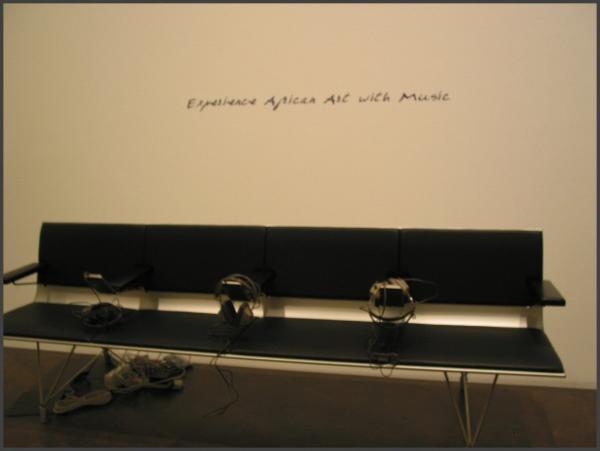
| As you continue to walk you come across the "Experience African Art with Music" display. Directly across from it was a bench complete with iPods and earphones so you could sit and experience sounds from various objects. (I didn't "experience" it so I don't have much to report about it, but I did enjoy seeing people's reactions). |
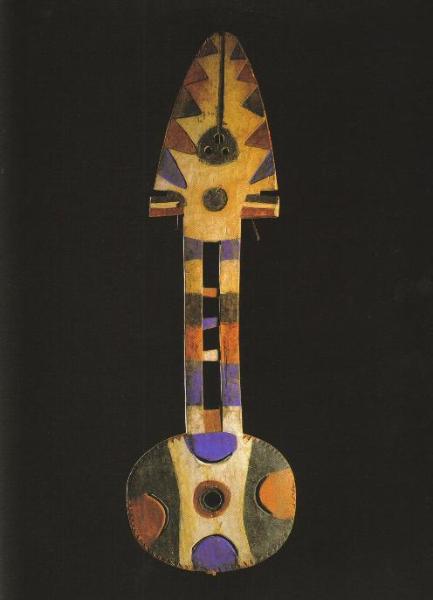
| Male dance mask of the Bedu society, by Sirikye, ca. 1960. Nafana, Cote d'lvoire. Wood, pigment, metal; 2.5m (96.8"). 1997.43. Native Arts Acquisition Fund. "Throughout the Nafana month of the Bedu moon, male/female masked pairs appear at night, modeling ideal behavior and satirizing inappropriate actions. The masquerade serves to purify and unify the community, promoting social order and fertility and warding off disease. Small crescent-moon cutouts and perimeter zigzag carving in the disk portion are characteristic of the unique style of Sirikye, a prolific and highly regarded twentieth-century Muslim artist." What is the proper way to display this mask I asked myself? The photo on the right from the DAM shows the round part on the bottom and the way it was displayed in the museum was with the arrow pointing down. It is a "male" mask and I laughed to myself that it possibly had 2 meanings depending on how it was displayed or possibly danced. |

| Door - Yoruba, Nigeria Master of Ikere ca. 1949 wood, traces of red pigment 147cm |
Twin figures, ibeji, by the Master of the Owu Shango Shrine. Yoruba, Nigeria.
Wood, beads; 28.5cm (11.3"). 1997.3.1, 1997.3.2.
Native Arts Acquisition Fund.
"The Yoruba view twins as powerful and mischievous descendants of the thunder god
Shango. Upon the death of one or both of them, a diviner often recommends that ibeji
figures be carved in order to protect the living. The work of the Master of the Owu
Shango Shrine (ca. 1850-1925), one of the most prominent and skilled carvers among
the Yoruba, displays a unique consideration of space and form, notably in the
juxtaposition of rounded areas with flat planes."
Wood, beads; 28.5cm (11.3"). 1997.3.1, 1997.3.2.
Native Arts Acquisition Fund.
"The Yoruba view twins as powerful and mischievous descendants of the thunder god
Shango. Upon the death of one or both of them, a diviner often recommends that ibeji
figures be carved in order to protect the living. The work of the Master of the Owu
Shango Shrine (ca. 1850-1925), one of the most prominent and skilled carvers among
the Yoruba, displays a unique consideration of space and form, notably in the
juxtaposition of rounded areas with flat planes."
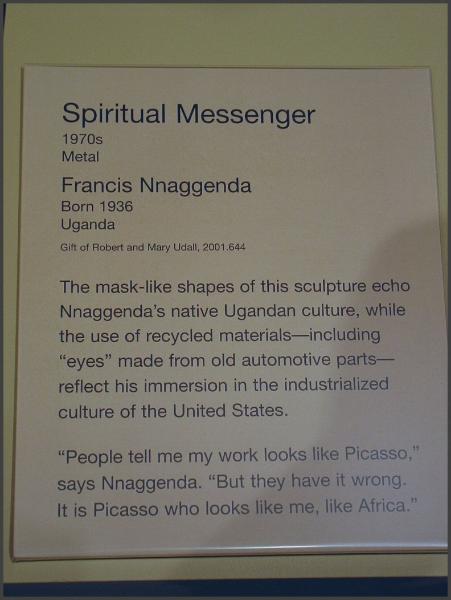
| The view to the left is of the back of the gallery and the view below is from the entrance of the gallery looking left as you walk in. |
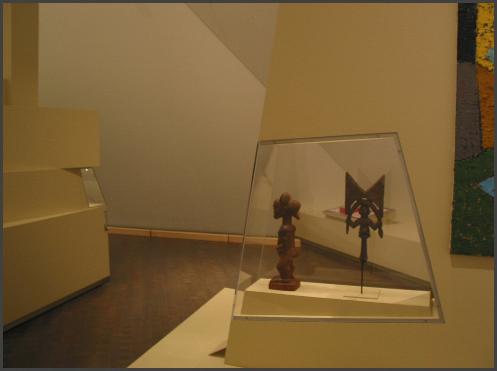

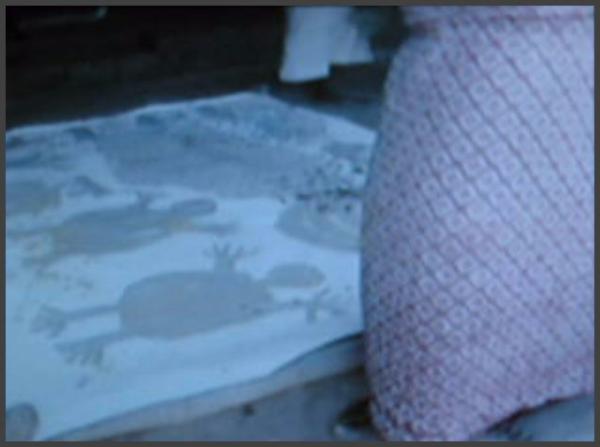
| The gallery mixes contemporary African art as well as traditional African art, which is nice. The paintings to the left are from the Akire shrine painters of Nigeria who are all women. To the right of the paintings were a wall of small video screens playing videos of the women painting, shown below is a frame from one of the videos. Moyo Okediji from the Denver Art Museum will be giving a talk about the Akire shrine painters in November in Denver on November 15th. It is a program sponsored by the Douglas Society of the Denver Art Museum. |
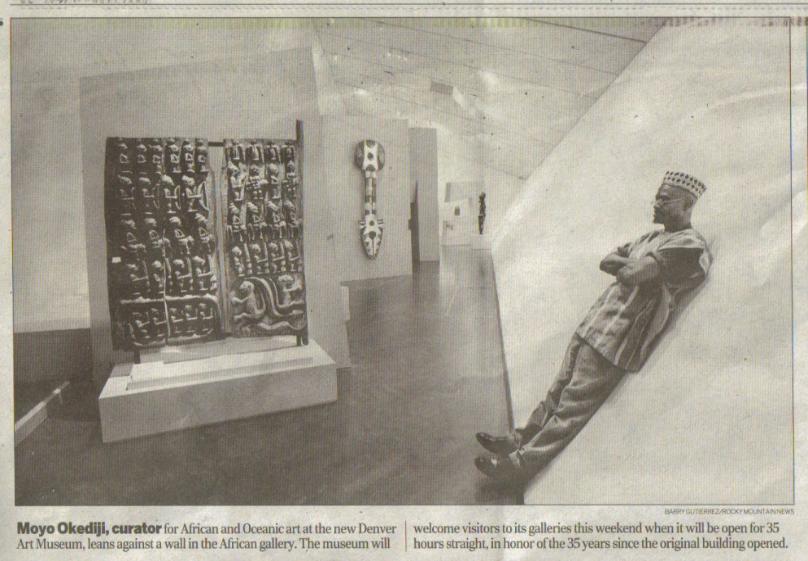
| Moyo Okediji leaning up against the wall in the new African art gallery. Photo Barry Gutierrez (Rocky Mountain News Oct 06, 2006) |
